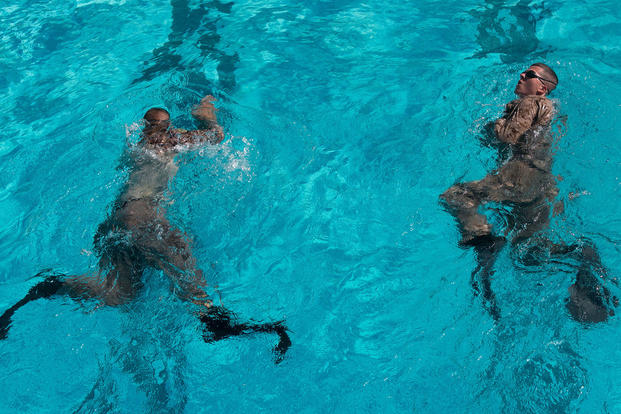You will see in both my Military.com articles and my books that I like the Pyramid System of training. Though it does not make up a majority of my programming, it has a significant part in building a foundation of fitness for beginners, intermediate and advanced tactical athletes, depending how you use it.
The pyramid is a perfect workout, complete with a warmup (first few sets), a max-out (failure point) and a cooldown all rolled into one. That’s the main reason why I use it so often, but here’s a good question from a veteran who has experience with the pyramid system (as well as others) and is just curious as to why it is so popular when doing PT workouts:
Stew -- Longtime reader and user of your programs. I like (not love) the pyramid workout with calisthenics, but love it with weights (drop sets and 5, 4, 3, 2, 1 type heavy lifts). Is it really a versatile workout that is optimal for training? Are there better ways to train?
I love pyramids. We do them all the time with calisthenics like you do with weights, but also with running, biking, even swimming. So, yes, they are that versatile. I’ve even written on the top 10 uses for the pyramid. There are all kinds of ways to add variety to the pyramid to make them harder, easier and adjust them to fit your goals. I have not found a use for the pyramid that did not work for a goal.
But your question is more difficult to answer: Are they optimal?
The best way to answer this question is to test different workouts and see what works best for you. You sound like you like lifting more than calisthenics. I was the same way and found the PT pyramid to be a great tool to build up the muscle stamina and endurance needed for high-repetition military fitness tests (two minutes) that require a competitive score.
They were also a great “in-workout” assessment tool. You do the pyramid one day and fail at set eight at an exercise, but the following week, you fail at set nine or 10. You can see progress each time you do it, just as you can see increased weight on the barbell when lifting for increased strength numbers. I found that to be a nice comparable when not in a heavy weightlifting cycle during cardio and calisthenics (muscle stamina and endurance cycle), which is needed for the tactical athlete.
The best test is to cycle through workouts that focus on different elements of fitness through the year in a tactical periodization program. While doing that, you can see what styles work best for you. You may prefer circuits, super set, split routines, 5x5, 3x10, weights over calisthenics, weight vests over TRX or max repetition sets, depending on your current goals. Regardless, the PT pyramid, weightlifting reverse pyramid, bike pyramid, swim pyramid and other activities that you can apply to the pyramid rep or set system creates a solid foundation for you in every element of fitness used.
Related articles:
OPTIMAL Health -- sleep exercise nutrition
Stew Smith is a former Navy SEAL and fitness author certified as a Strength and Conditioning Specialist (CSCS) with the National Strength and Conditioning Association. Visit his Fitness eBook store if you’re looking to start a workout program to create a healthy lifestyle. Send your fitness questions to stew@stewsmith.com.
Want to Learn More About Military Life?
Whether you're thinking of joining the military, looking for fitness and basic training tips, or keeping up with military life and benefits, Military.com has you covered. Subscribe to Military.com to have military news, updates and resources delivered directly to your inbox.















